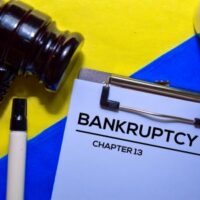Chapter 13 as a Foreclosure Defense: Restructuring Your Debt to Save Your Home

If you’re a homeowner in California, Chapter 13 bankruptcy can be one of the most powerful legal tools available to stop foreclosure and give you a structured way to catch up on what you owe—without giving up your house.
The Los Angeles foreclosure lawyers at Wadhwani & Shanfeld have helped thousands of individuals and families use Chapter 13 to protect their homes and rebuild financial stability. If foreclosure is looming, understanding how Chapter 13 works may open the door to hope—and a plan.
What Is Chapter 13 Bankruptcy?
Chapter 13 bankruptcy is designed for individuals with a regular income who need time and legal protection to reorganize their debts. Unlike Chapter 7, which focuses on eliminating unsecured debt quickly and often requires the liquidation of certain assets, Chapter 13 allows you to keep your property while repaying your debts through a court-approved plan over three to five years.
For homeowners behind on their mortgage, Chapter 13’s structure offers a clear advantage: it allows you to cure the default by spreading out your past-due mortgage payments over time, all while stopping the foreclosure process through the court’s automatic stay.
How Chapter 13 Stops Foreclosure
The moment you file for Chapter 13 bankruptcy, the court issues an automatic stay, which immediately halts foreclosure proceedings, even if a sale date is just days away. This powerful legal protection prohibits lenders from moving forward with foreclosure as long as the bankruptcy stay is in effect.
This gives you breathing room to work out a plan—not just to stop the foreclosure, but to actually catch up on your mortgage payments and save your home.
Let’s say you’re $30,000 behind on your mortgage. In Chapter 13, you can propose a repayment plan that includes those arrears spread out over 60 months. That’s $500 per month in catch-up payments, in addition to your regular monthly mortgage. This gives you a practical path to becoming current, without facing lump-sum demands from your lender.
Why Chapter 13 May Be Better Than Chapter 7 for Homeowners
Many people assume that bankruptcy is bankruptcy—that it’s just a matter of choosing to file or not. But the type of bankruptcy you choose can make a big difference, especially when it comes to your home.
Chapter 7 bankruptcy can delay foreclosure, but it does not provide a mechanism to catch up on missed mortgage payments. It may discharge other unsecured debts like credit cards or medical bills, and the automatic stay will temporarily stop the foreclosure. But once the case is closed—usually within a few months—the lender is free to proceed with the sale unless you’re current on the loan.
Chapter 13, on the other hand, is specifically designed to help people keep important assets—especially their home—by repaying debt over time. For many homeowners, it’s the only realistic way to avoid foreclosure when they’ve fallen significantly behind.
Chapter 13 also offers other advantages:
- It consolidates other debts: You may be able to include credit cards, medical bills, car payments, and even tax debts into your repayment plan.
- It can stop vehicle repossession: If you’re behind on your car loan too, Chapter 13 can stop the repossession and allow you to catch up.
- It protects co-signers: In some cases, Chapter 13 can prevent creditors from pursuing co-signers during the repayment period.
- It can eliminate second mortgages: If your home is worth less than your first mortgage, you may be able to “strip” a second mortgage or HELOC in Chapter 13, turning it into unsecured debt and potentially discharging it.
What Happens During a Chapter 13 Case?
Filing for Chapter 13 involves proposing a repayment plan that outlines how you’ll repay certain debts over a period of three to five years. The court reviews your plan to ensure it meets legal requirements, and creditors can object—but most plans are approved if they are realistic and properly structured.
Once your plan is confirmed, you’ll make monthly payments to a court-appointed trustee, who distributes the funds to your creditors, including your mortgage lender. As long as you keep up with your plan payments and your regular mortgage, the lender cannot foreclose.
At the end of your plan, any remaining unsecured debts that are eligible for discharge are wiped out—and you’re current on your mortgage.
Common Misconceptions About Chapter 13
Some people hesitate to consider Chapter 13 because they’ve heard it’s too complicated or expensive. Others worry it will ruin their credit forever. But many of these concerns are based on myths or misunderstandings.
Yes, Chapter 13 is a commitment—but it’s also a lifeline. Instead of watching your home slip away, you have the chance to take control, get organized, and emerge stronger. And while bankruptcy does impact your credit, completing a Chapter 13 plan and staying current on your mortgage can actually help you rebuild your credit faster than continuing to fall further behind.
It’s also worth noting that the court provides protection and oversight. Creditors must follow the rules, and the bankruptcy process ensures fairness and transparency. You’re not doing this alone—your attorney, the trustee, and the court are all part of the process.
Contact Wadhwani & Shanfeld
If you’re facing foreclosure and want to keep your home, Chapter 13 bankruptcy may be your best option. At Wadhwani & Shanfeld, we’re here to walk you through every step of the process and build a plan tailored to your needs. Our experienced bankruptcy attorneys can help you stop the foreclosure, catch up on your mortgage, and restructure your debt in a way that puts you back on solid financial footing. Contact us today for a free consultation—and take the first step toward saving your home and securing your future.
Souces:
uscourts.gov/court-programs/bankruptcy/bankruptcy-basics/chapter-13-bankruptcy-basics
library.nclc.org/book/surviving-debt/chapter-13-bankruptcy-may-stop-foreclosure-permanently
